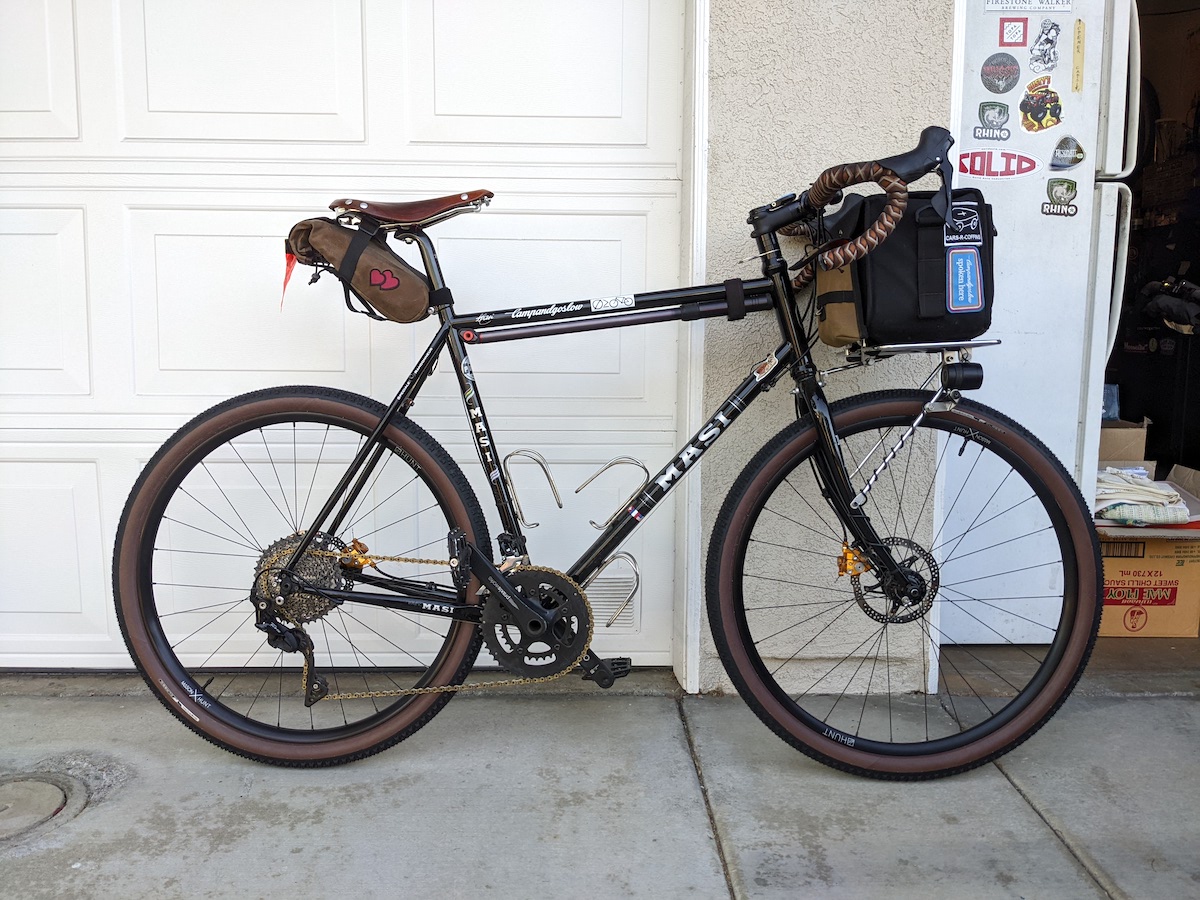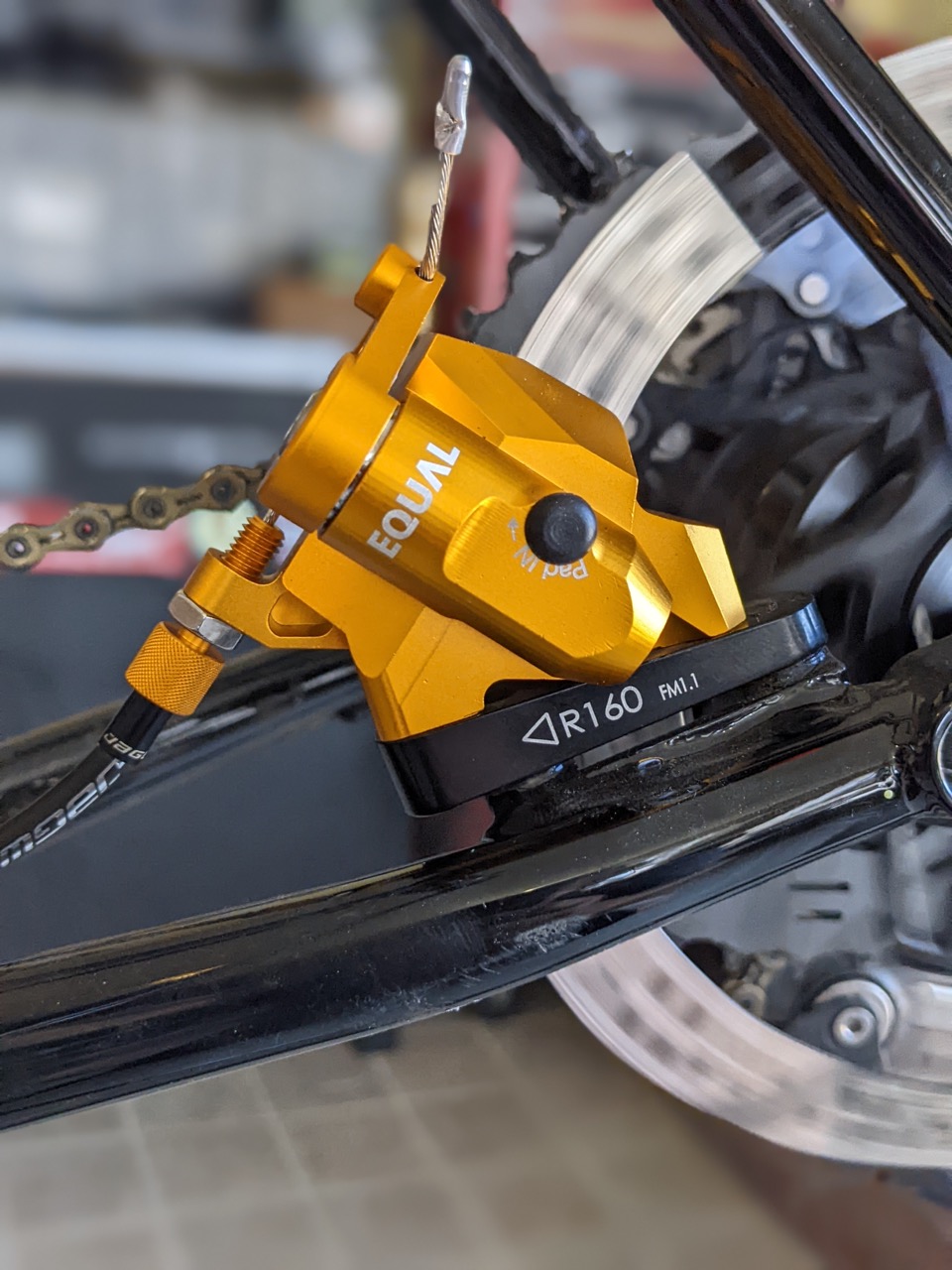Polarizing opinions aside, cable-actuated disc brakes aren’t going anywhere. And frankly, in many circles, these types of disc brakes actually seem to be more popular than ever.
As you may have guessed, I for one am a big fan of the mechanical disc brake. Mostly, just for the simplicity of ’em. There is no denying that they’re easy to set up and maintain.
Plus, if you ride your bike in remote, faraway places, like on a bikepacking trip, an adventure-filled long day ride, or even a double century, cable-actuated disc brakes are easier to repair on the fly as any ol’ brake cable will work in a pinch (plus you can easily carry a spare cable).
Also, most mechanical disc brake calipers on the market, including the Growtac, use the most common types of brake pads (Shimano K04, K03, K0s-RX). These types of brake pads will, more than likely, be available at any bike shop you might happen upon in your bicycle travels. All reasons why you might want to check out mechanical disc brakes. Specifically, the new Growtac Equal disc brakes.
On to the Review…
I received the pair of gold (and I mean gold!) Growtac Equal brakes from Igor at Velo Orange. Velo Orange is, as of this writing, the only place you can buy these brakes in the USA.
These brakes were destined for my Masi, so I received the flat-mount version of the brakes. But they do come in post-mount as well with the additional color of purple (exclusive to the post-mount version).
“What’s in the Box?”
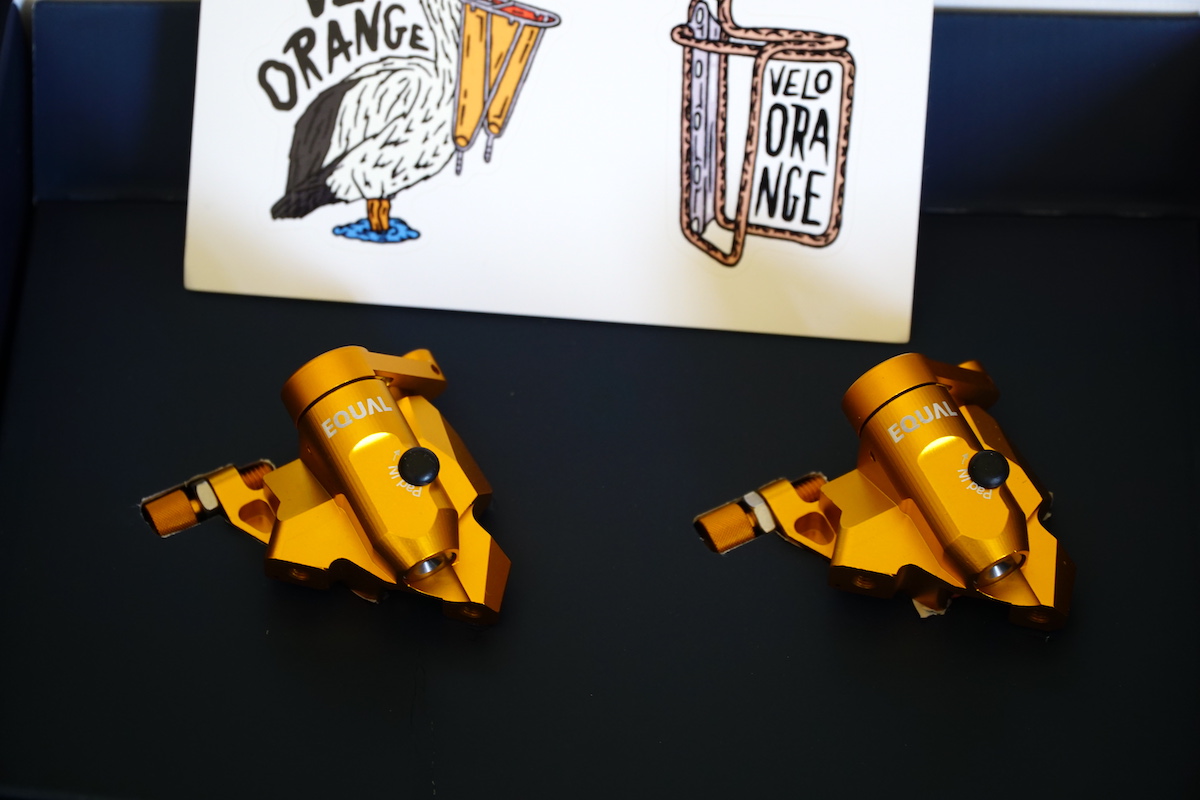
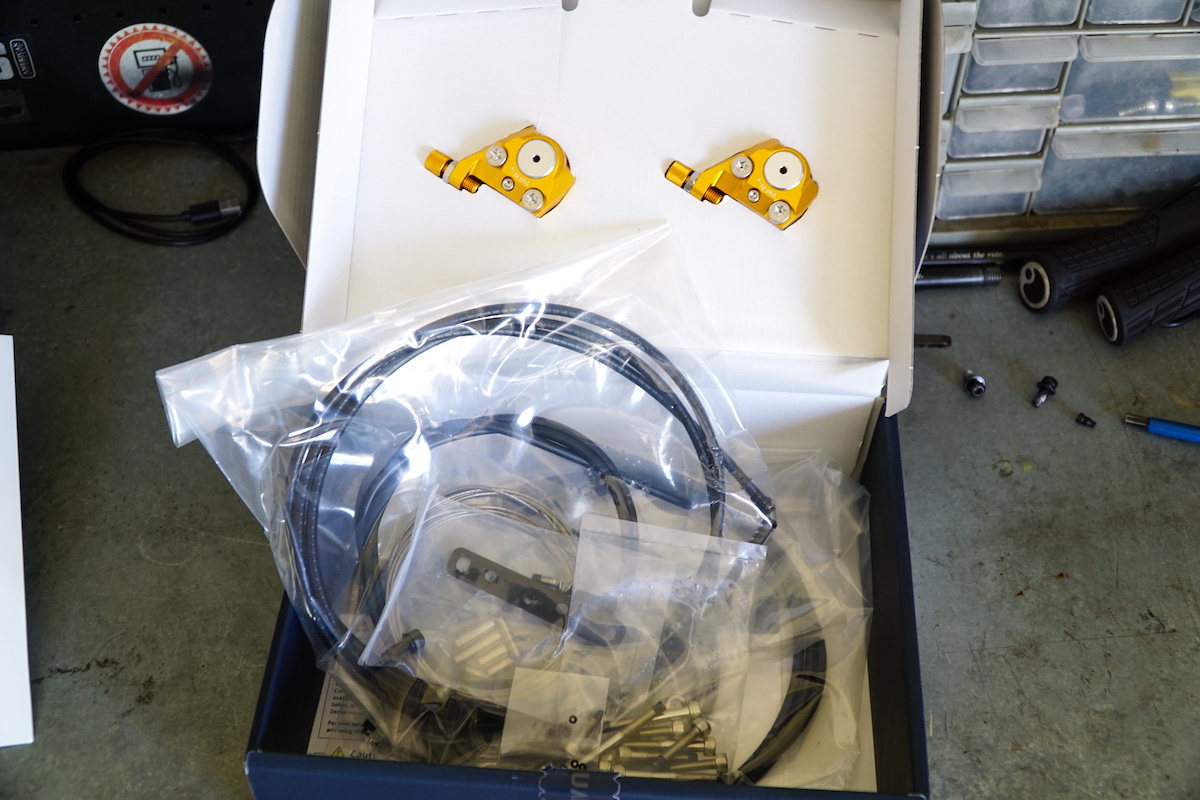
The box that these brakes came in was a bit extravagant and large. But to be fair, the box was designed to “display” a pricey set of brakes and hide all of the goodies that come with them underneath. You don’t just get the brake calipers when you purchase these, you get everything you need to install the brakes except new rotors. I was impressed with the fact that they came with both front and rear compressionless (stiff) and non-compressionless (flex-a-mundo) housing, front and rear brake cables (for both road or mountain bikes), housing ferrules, cable ends, a bunch of different size hardware for the rear brake and the front flat-mount adaptor.
Weight and Installation
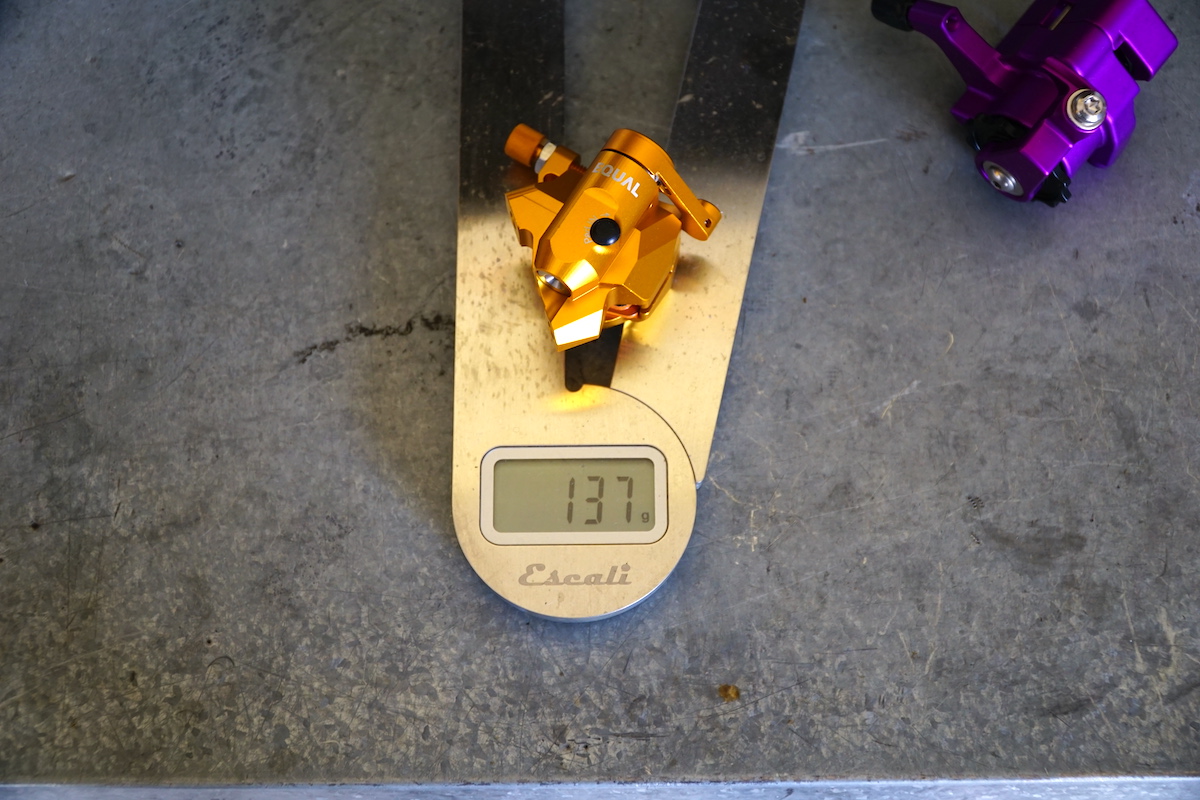
The weight of the Equal brakes with the pads installed was only 137 grams per caliper. That seems very respectable.
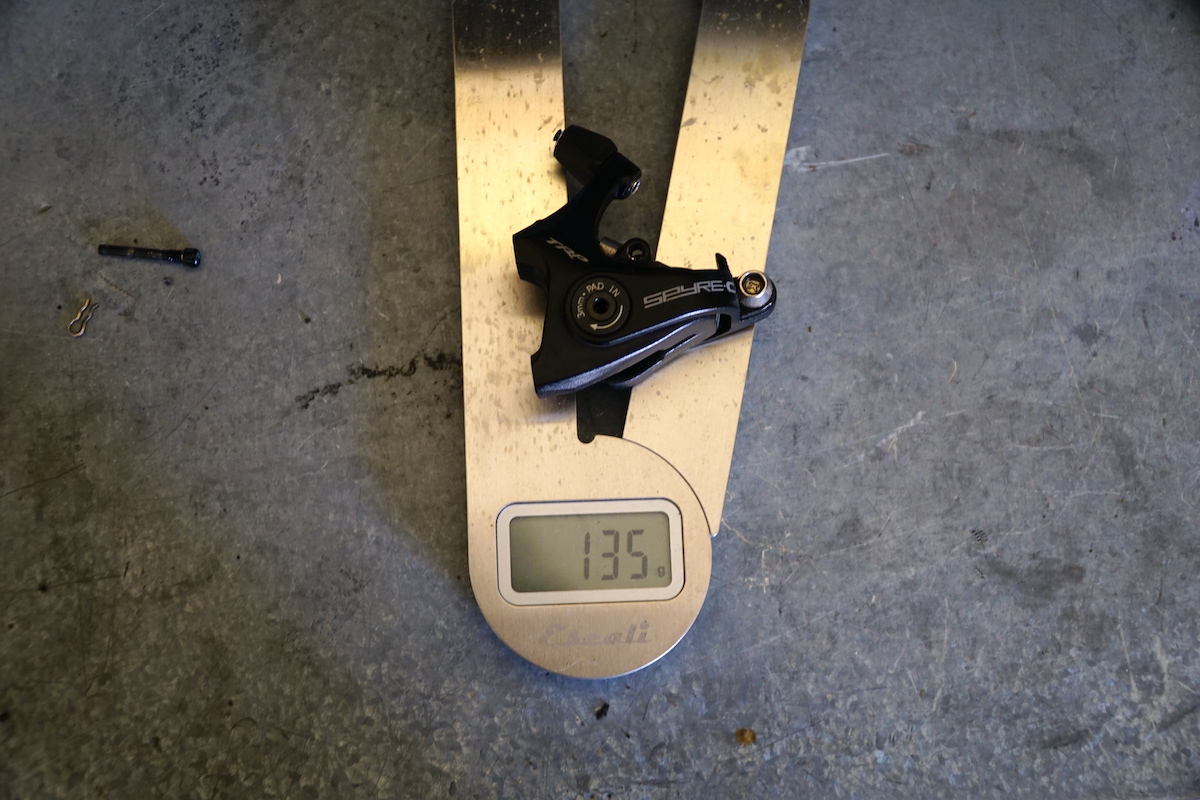
I thought it would be a great idea to compare the weight of the TRP Spyre-C caliper that the Equal is replacing on my Masi. I thought the Spyre would be heavier, but it was two grams lighter… but I noticed that there is very little material left on the Spyre’s pads…easily 2 grams worth. So, I am going to say that they are approximately the same weight.
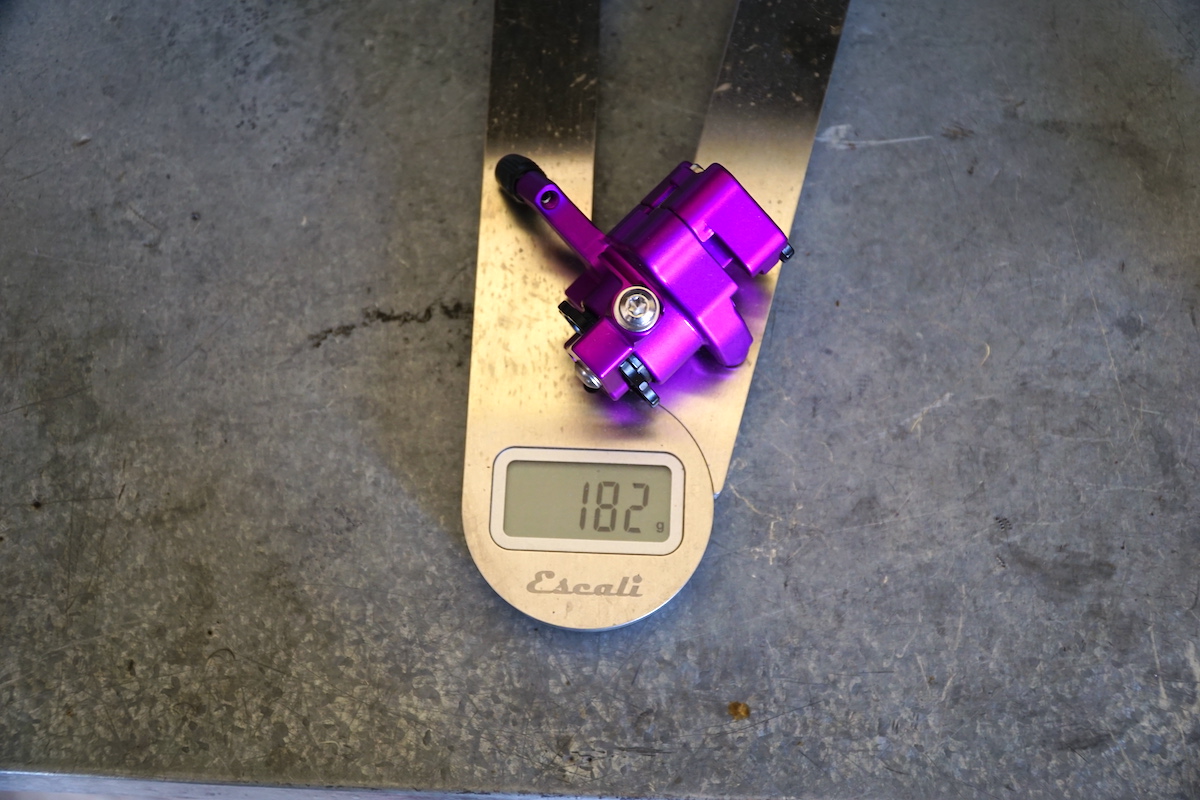
OK, because I know that you’re all gonna ask… and also because I’m in the middle of doing a comparison review of the Klampers vs the Equals on the same bike and I have some of the Klampers on hand, I decided to do a weight comparison of the two… you know, just to whet your appetite.
The Paul Klamper caliper came in at 182 grams without the pads. I was a little surprised that the Klamper was 45 grams heavier. But, that being said, as much as these brakes are similar, it’s not quite an “apples to apples” comparison and the weight difference is not the end of the story on the Klampers vs. the Equals.
You’ll have to stay tuned… sorry (not really).
Installation and Set-Up
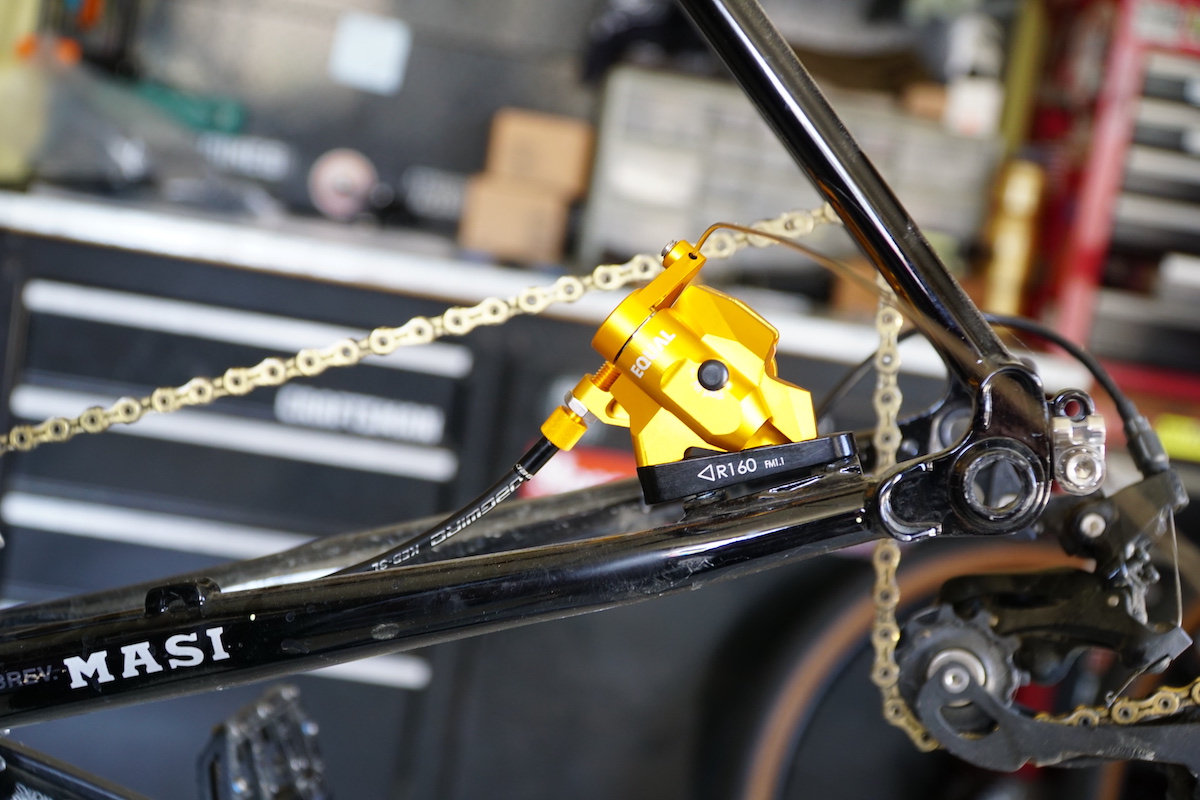
As I mentioned earlier, I am installing these brakes on my Masi Rando bike with Shimano 105 brifters. The Equals are only available in a short pull version, so they will work great with drop bar levers or cantilever brake levers.
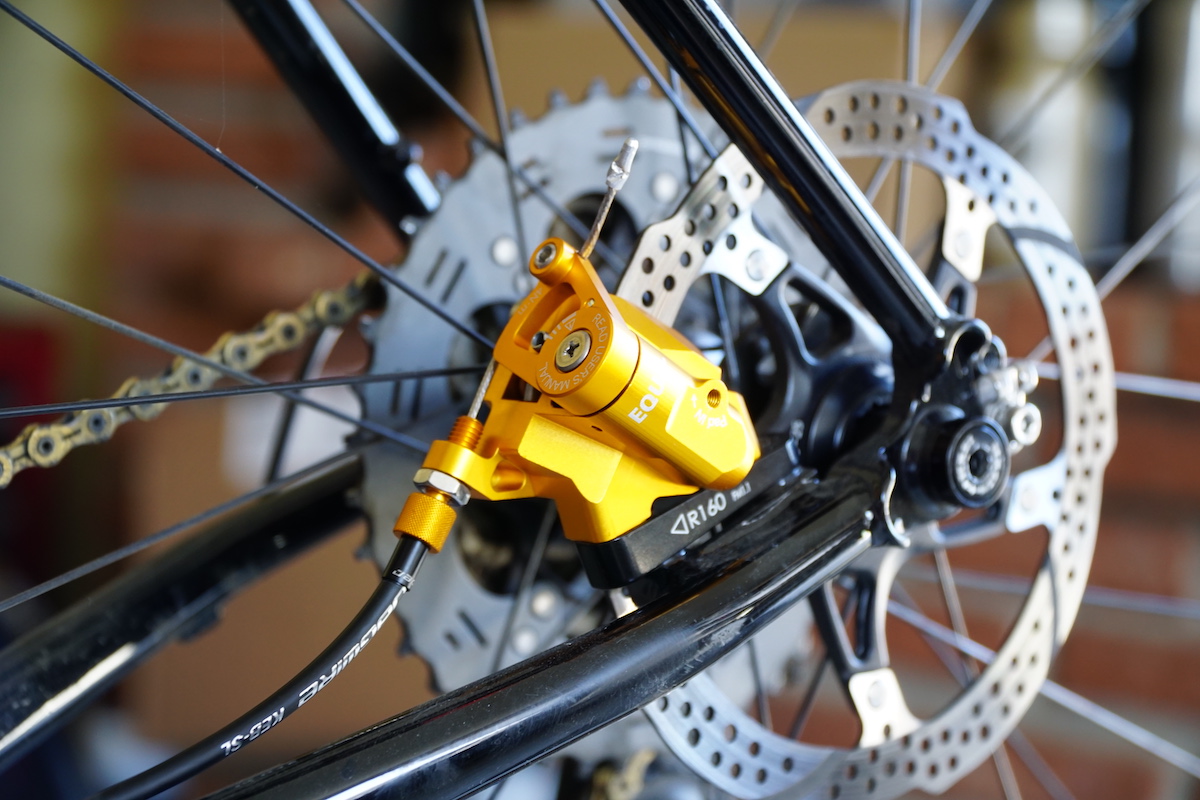
The brake calipers are compact and light. I would say the finish on the calipers isn’t as elegant as the Klampers, as there are a lot of visible “machine markings”. This in no way was a big deal to me, but at this price point, it could be for others. I personally like the aesthetics and angles of the calipers a lot.
Having the actuator arm on top of the caliper instead of the side helps in keeping the caliper tight, small, and tucked in on the chain stay.
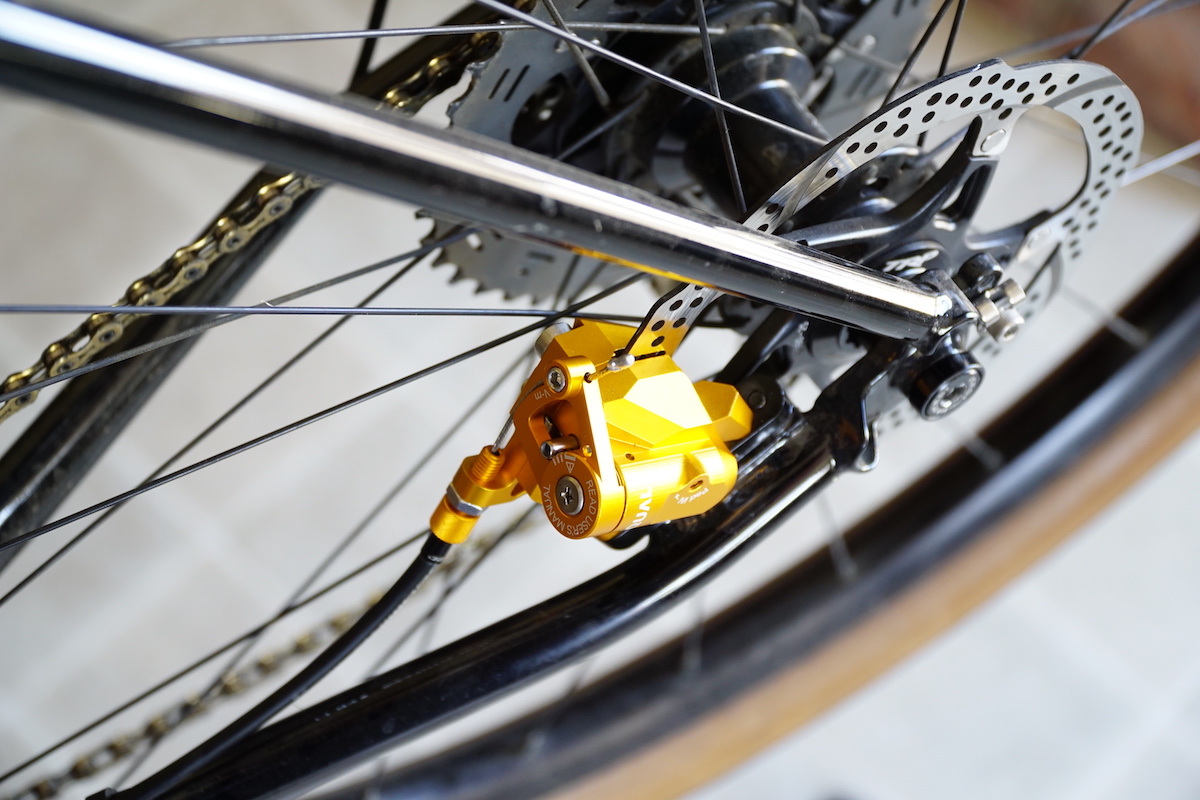
Set up was really simple. There were more steps than I’m normally used to when setting up my brake calipers to the rotor… but the result was a little better than I normally get… so take that for what it’s worth.
After looking through and following the instructions, which were really good BTW, Growtac suggests using the compressionless housing for best results. They included the non-compressionless housing likely in case the housing routing on your frame has you making some tough turns that the stiff stuff can’t make.
Once the caliper is on the bike (finger tightened) and the housing is cut and fitted, turn the barrel adjustor out 1 to 2mm, and turn the silver nut to lock it there.
Take the actuator arm and push it to the left completely to allow easy passage of the brake cable onto the arm and through the set screw. Once it is through, let the actuator arm back to its resting place. Pull the cables slack out and tighten the set screw.
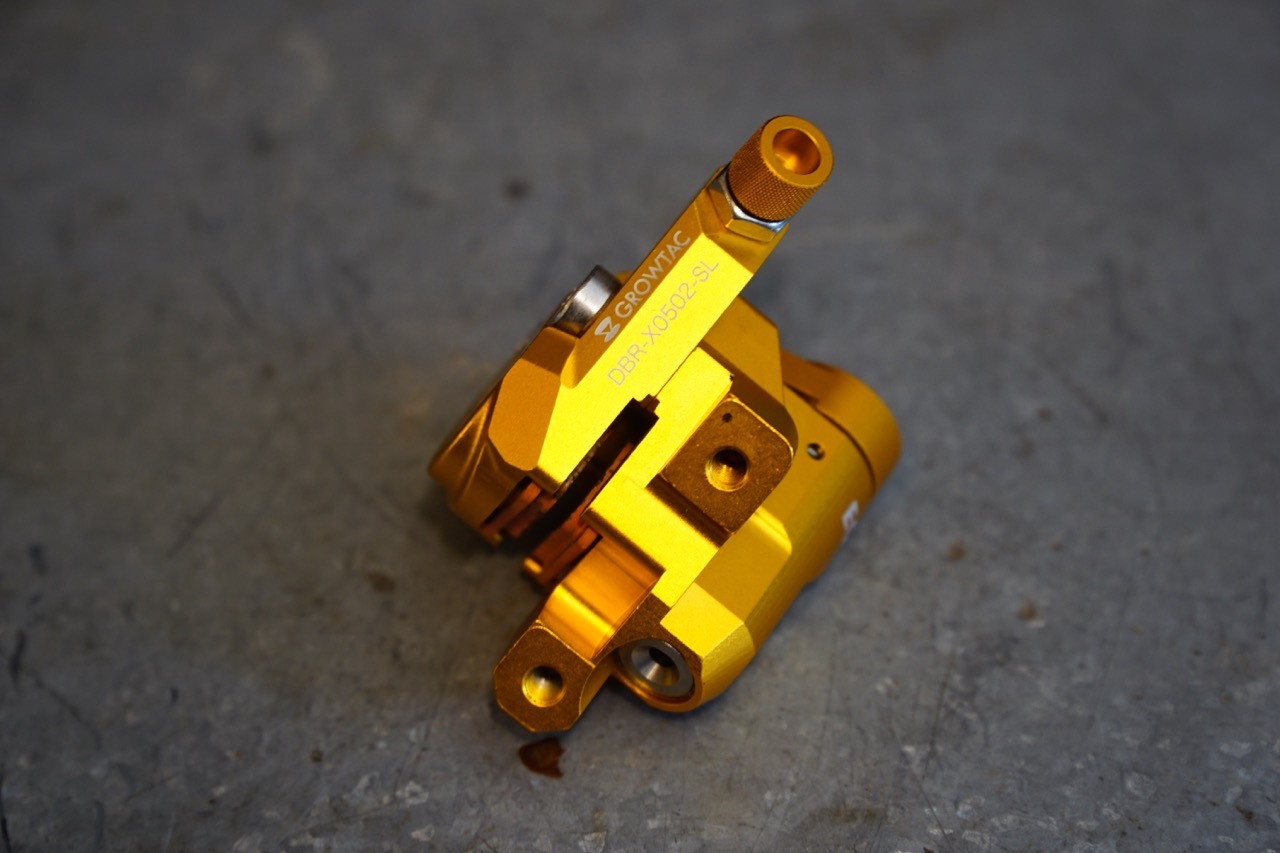
Then, using a 3mm Allen key, adjust the inner and outer pads to pinch the rotor. There is an actual “rotor-centering-notch” on the caliper to help you center the rotor “inside” the notch. You will pinch the rotor until the rotor is centered in the little centering notch, then tighten the caliper to the frame to the required torque. BTW, this little notch was super helpful in lining the pads up, and centering the rotor in the caliper.
Once the caliper is tightened to the frame, Growtac suggests squeezing the lever hard three or four times to seat the housing and end caps, then loosen the set screw and remove the extra cable slack. At this point, it’s time to adjust the pads back out, away from the rotor.
Once the pads are out, and the wheel spins freely, adjust the inner (fixed side) pad to where it is close to the rotor but no rotor contact is heard when the wheel is turned. Now adjust the outside (actuating) pad to match the amount of lever throw you find comfortable. Once that is determined, you can now turn the barrel adjustor to eliminate any further cable slack.
Blammo, you’re done and ready to ride!
Once this is finished, I found the result was a snappy and fluid lever feel that was easily adjusted to how I like my brakes to feel. That’s it. I know, when writing it out, it feels like a lot, but it’s really quite simple and easy to get it right the first time.
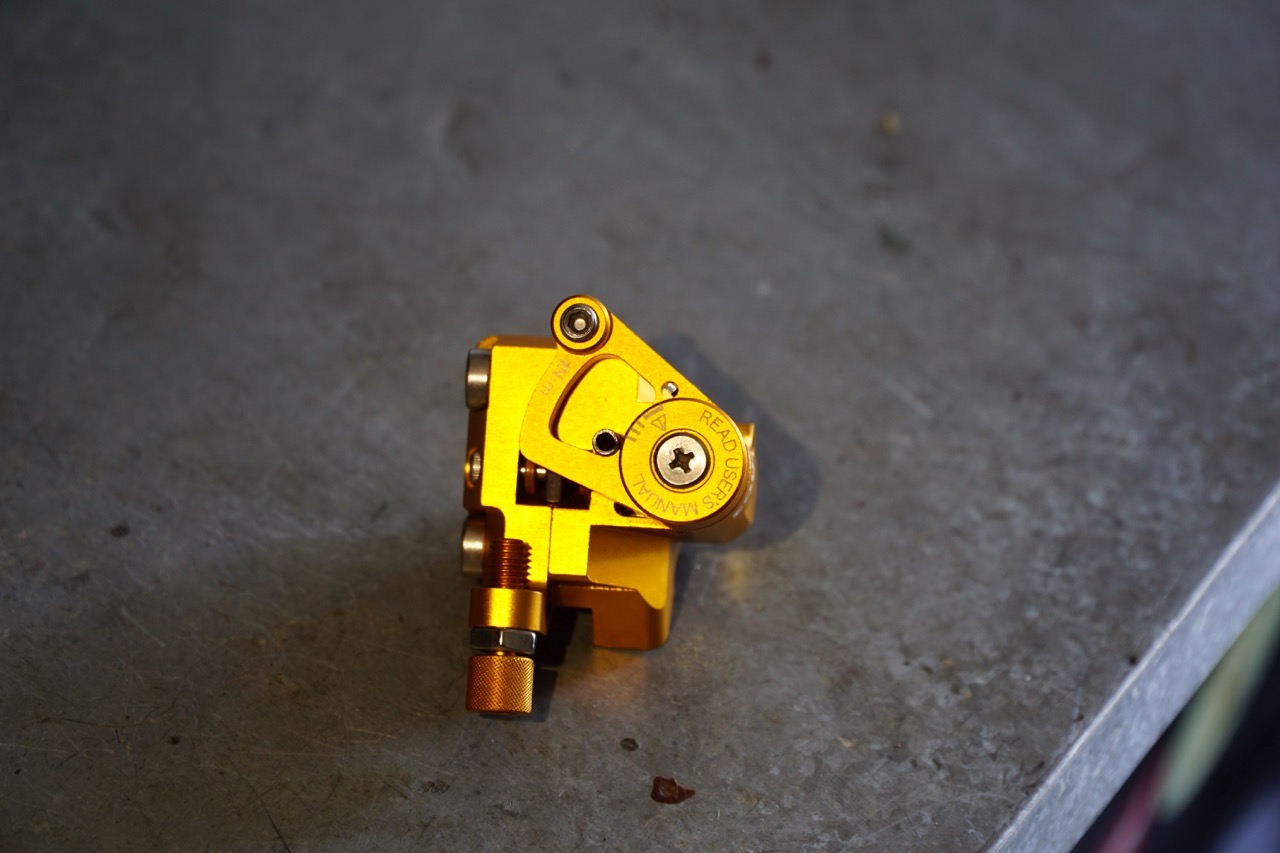
Another cool feature of the Growtac Calipers is the brake pad wear gauge on the actuator arm. The first three lines (left to right) are marking healthy pad usage….but, then at the flat line and triangle around the exclamation point (all the way to the right), that’s when you enter the Danger Zone, and you need to change your brake pads. Nice attention to detail.
How They Performed
I will get right to the point. These are the strongest cable-actuated disc brakes I have ever ridden to date. The brake’s strength was very impressive. I was able to pull an effortless, seated, on-pavement, skid with very little effort. I know that’s a weird, non-scientific thing to say, but I’ve never had a mechanical disc brake that was able to do that, effortlessly I mean. My Spyres have gotten close, but not without me helping them along by unweighting the rear wheel.
I already know that this is a very ad-hoc litmus gauge to test braking strength. To be transparent, I am a large human being, weighing in at 245lbs. To me, being able to throw down a skid, effortlessly while not aiding it, showed me something these brakes could do that other mechanicals I’ve owned couldn’t.
I guess the short story here, is that these are some strong-ass brakes!
Another thing worth mentioning is that these brakes have remained completely noise-free from the initial shake-down ride… not a peep.
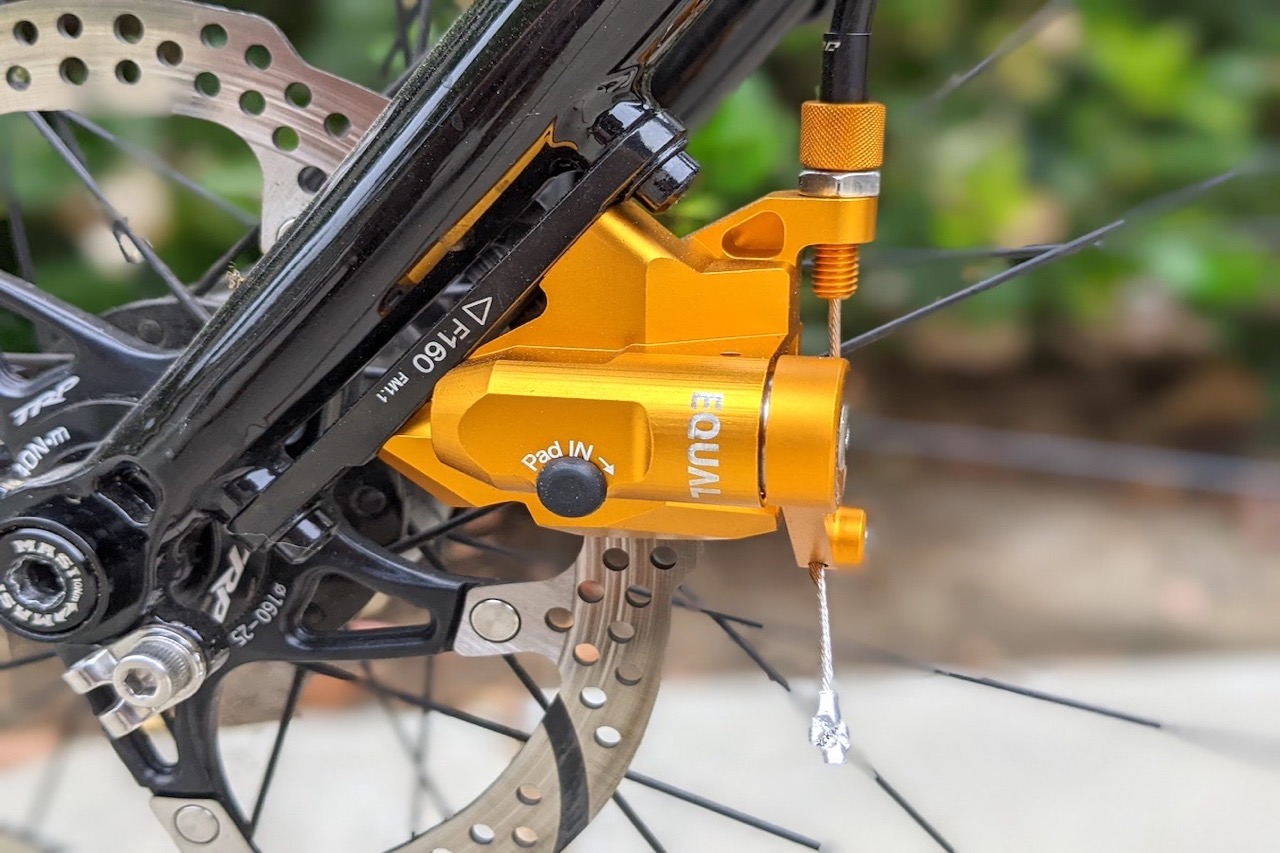
The brakes were reviewed on a sufficiently used set of TRP center lock rotors, but they didn’t seem to be phased by that at all. And the Growtac’s pad break-in period was short and easy.
They performed very, very well on long paved descents. They seem to have great heat dissipation, suffering zero fading, or glazing of the pads. They were fantastic at stopping a 30-plus pound bike with a 245-pound rider from a speed in excess of over 40mph, over and over again. This may be a surprise, but I don’t race, and I am not bombing all of the hills out there… but I feel that these brakes wouldn’t have an issue stopping you in either of those situations (racing or hill bombing).
One descent that I rode during this review has a few, really fun, twisty corners and one fast hairpin. When diving into these corners, and attempting to feather the brakes, was the point that I felt the lack of modulation came into sharp focus. Make no mistake, I knew there would be some modulation issues. Up to this point in the several weeks that the brakes were under review, I had noticed some of the lack of modulation already.
Remember, this is typically any cable-actuated brake’s nemesis….modulation, or the lack of it. And these brakes were no exception. Maybe swapping out the pads to a different compound or swapping the compressionless housing for the non-compressionless housing would help with the “feel” of getting some modulation. I’m sure the lever feel would be affected and not feel as snappy… but that aside, maybe it would help.
I want to emphasize that this is nothing new here and not exclusive to the Equals. Lack of modulation is or seems to be, the bane of all cable-actuated disc brakes. It’s also, in my opinion, the only argument for hydros over cable-actuated brakes… even then, it’s a weak argument. I personally feel the cable-actuated brakes’ benefits far outway the one negative. And for most riders not doing crazy, technical descents, it’s not a negative at all.
I found that the Equal’s lack of modulation was completely manageable and easily dealt with and compensated for on all of my rides with these brakes.
Tech, Price, What’s Included
Equal brakes are developed and manufactured in Japan. And like I mentioned earlier in the post, are only available through Velo Orange!
Retail $350
They come in these colors:
- Gold
- Grey
- Red
- Blue
- Black
- Silver
Tech stuff:
- Cable Pull: Road, short pull
- Weight per caliper: 135g
- Pad Actuation: Single piston
- Adaptors/Mounts Included: Front: 140mm or 160mm rotor. Rear: not included*
- Japanese-made cables and housing included!
What’s included in the box:
- 2x Growtac Equal Flat Mount Brake Calipers
- 2x road brake cables
- 2x mtb brake cables
- 1x front flat-mount adaptor for 140mm or 160mm rotor.
- 2x compressionless housing (stiff)
- 2x non-compressionless housing (flexy)
- Bunch of housing endcaps
- Mounting hardware for the rear brake
* Please note that if you are mounting these brakes onto a frame designed for a 140mm rear rotor without adapting, but plan to run a 160mm rotor, you will need a rear flat mount adaptor.
In Conclusion
I really liked these brakes. As I have them set up on my bike, they are a tremendous cable-actuated disc brake set and for sure one of the best I’ve tried. In the varying applications that I used these brakes in over the past several weeks, it is my opinion that the Growtac Equal disc brakes are plenty strong for most (almost all) braking applications.
They are easy to set up and the lever feel is crisp and snappy instantly. The actual braking felt great almost immediately after the initial set-up. The lever feel has stayed consistently sharp and responsive throughout the review period, with a very solid and confidence-inspiring contact with the brake pads.
I do love that you get everything you need (sans rotors) to set up your bike for $175 a wheel. I know that’s not “cheap” and it’s about $100 more (per wheel) than the TRP Spyres. But, for a high-end brake caliper, machined from aluminum, that comes with everything you need (again, sans rotors), with the massive stopping power these brakes have, that price seems reasonable to me…plus the bling factor of the gold is off the charts!
With the lack of modulation feeling that the brakes have, it did take some getting used to and I eventually learned to work with the brakes. And in all fairness, maybe if I had spent a little more time with them, it would’ve been something I could easily get used to. It’s hard to say. Since the Growtacs have so much to offer in the braking power department I think I would gladly trade off a little less power for a little more modulation.
All and all they are well-built brakes that seem to be very high quality and super strong… I would definitely recommend these brakes to any lover of the cable-actuated disc brake.
